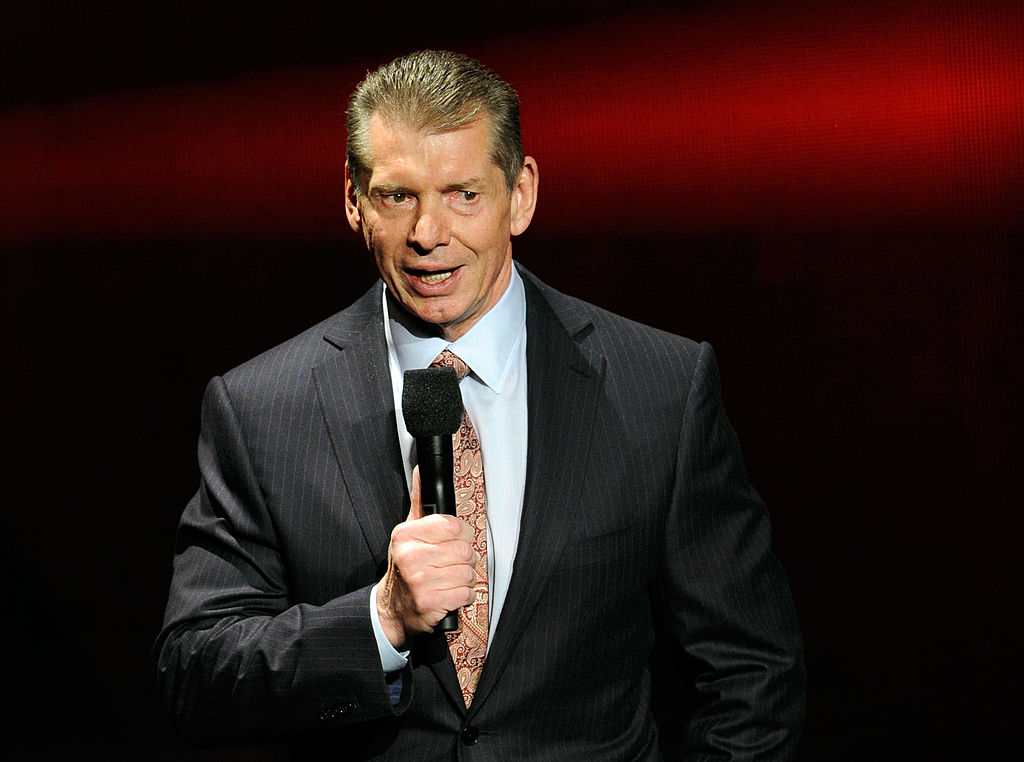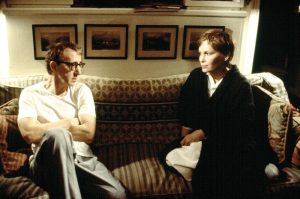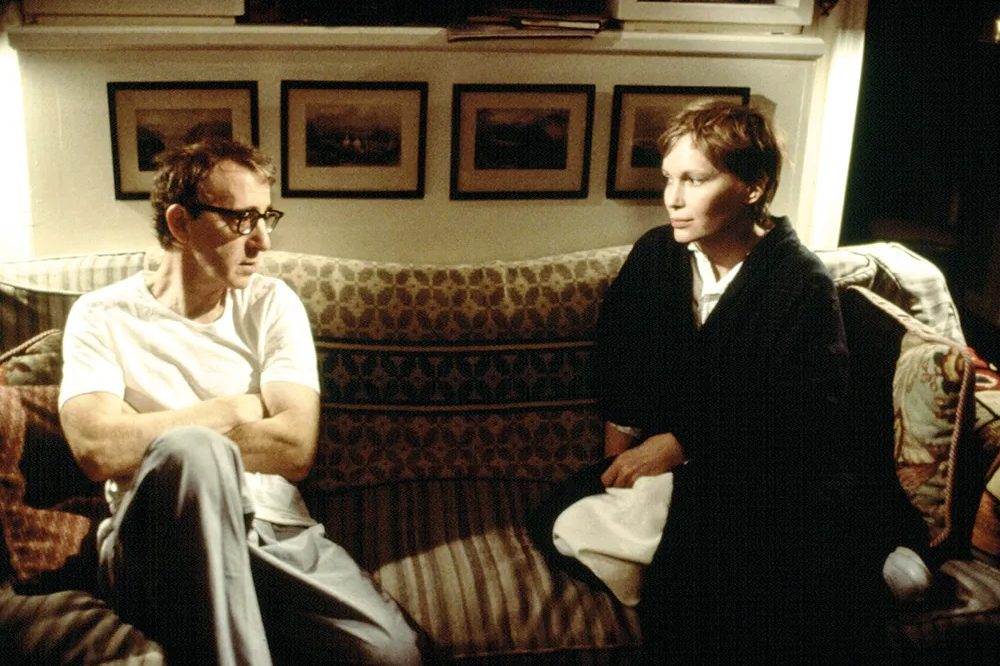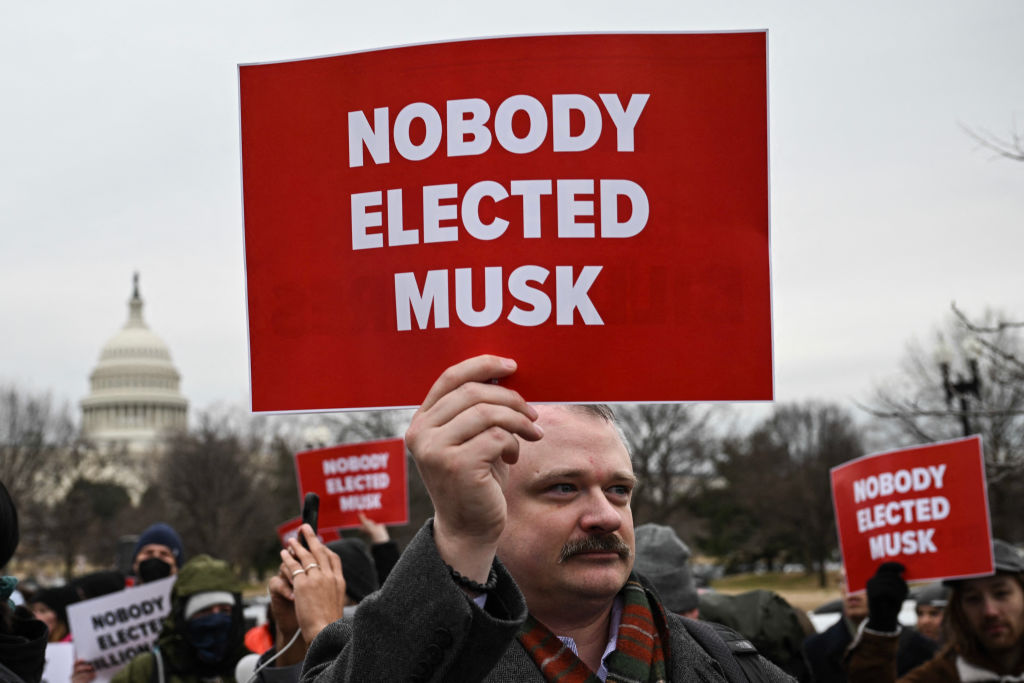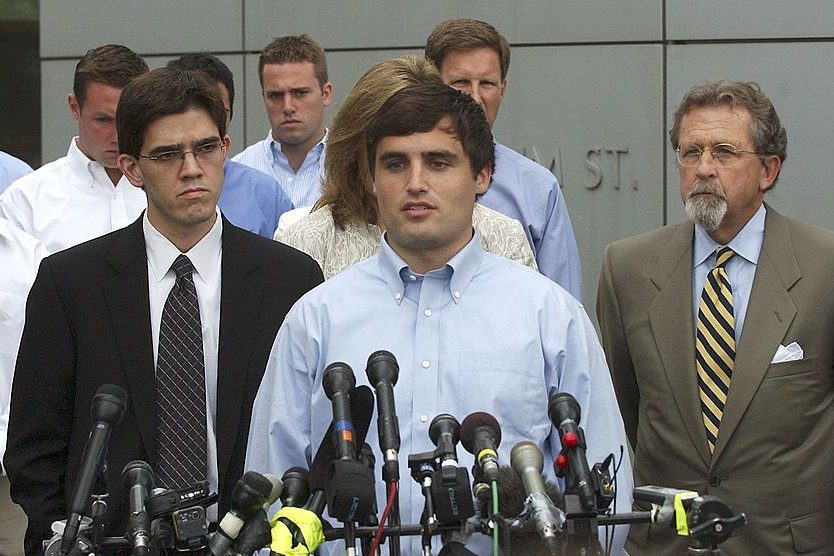Vince McMahon displays a T-Rex skull in his office. It is mounted against blood-colored walls. But is it real? It doesn’t matter, as it’s authentically Vince McMahon to mount such a garish display of masculine bravado on his wall. It’s the kind of over-the-top centerpiece you’d expect from the mogul who built World Wrestling Entertainment into the behemoth it is today. A giant of a man, McMahon has spent four decades laughing maniacally as he feasted on the flesh of his puny competition. “It’s on my wall and symbolic of my voracious appetite for life,” he tweeted.
There’s also prophetic symbolism to the dead-dinosaur skull. In June, the Wall Street Journal reported that the WWE board was investigating a “secret $3 million hush pact by CEO Vince McMahon.” The “hush pact” was between McMahon and a former employee he was having an affair with. Two days later, he stepped down as CEO, with his daughter Stephanie taking over for an interim period. Additional more damaging misconduct allegations were to come. At seventy-six, it seemed like an asteroid was headed for Vince McMahon’s world. But then the WWE announced that McMahon would be making an appearance on TV, in front of a live crowd at their Friday Night SmackDown show. But what would he say? Was this all part of a larger storyline in an industry that constantly blurs the lines between reality and fiction? Would McMahon even last the week? Would he eat us all alive?
This is, after all, the same Vince McMahon who nearly clobbered Bob Costas during a contentious interview in 2001; the same Vince McMahon who beat the federal government in United States v. McMahon (1994), when he was accused of supplying anabolic steroids to wrestlers who looked like comic-book characters. In 2001, McMahon gobbled up the last remaining bits of his competition: Ted Turner’s rival pro wrestling promotion, WCW, which ushered in one of the largest expansions of wealth in the history of wrestling. The CEO of history’s only publicly traded wrestling company is also the greatest character-driven storyteller of his generation. To WWE fans, myself included, McMahon’s storytelling is inseparable from the dreams of our childhood.
The criticisms of McMahon are just as compelling: that he’s a relentless chauvinist with a capricious and cruel sense of humor; that he’s turned the WWE’s writers’ room into a trauma center; that he’s responsible for unscrupulous business practices that included poaching wrestlers from regional enterprises, buying what was left of the territories and consolidating their bones into an operatic bodybuilding spectacle he called “sports entertainment,” which turned wrestling into his own personal genre.
“We make movies,” he once said. The concept of “sports entertainment” drew hostility from old-timers, but its heightened production value, product licensing and TV-friendly characters resonated with children. McMahon became the white-trash Walt Disney of a continuously marginalized industry. He turned the WWE into a family-friendly studio where stars were molded, renamed, costumed and groomed inside a vertically integrated star-making machine that treated them like products on an assembly line. In this regard, Vince McMahon is the last tycoon of the studio system.
Two days after this June’s Journal bombshell, in a ludicrous act of defiance, McMahon did in fact appear on SmackDown, as advertised, pugnaciously strutting down an aisle of worshippers who were singing the words to his theme song: “No chance in hell!” It was a shocking spectacle, considering the circumstances. With a flamboyant pink tie and mischievous twinkle in his eye, McMahon thanked his adoring public, repeated the company’s signature — “Then, Now, Forever, Together” — emphasizing together, and made his exit. That was it. It seemed like a nothingburger, but the message was meaty enough: with a billionaire’s strut and a marketer’s vision, he turned the scandal into a ratings draw.
In the middle of an investigation into misconduct claims, McMahon shrewdly flipped the script and turned himself into the biggest “baby face” in the WWE: an embattled hero to fans, and a ruthless monster to his critics in the media and boardroom. His June 17 SmackDown appearance drew 2.29 million viewers, which pushed the show to the top spot on TV that night. To say that Vince McMahon is the most indefatigable promoter that has ever lived is an understatement.
But then there was more breaking news, of the backbreaking variety, this time in New York magazine: “She Was WWE’s First Female Referee. She Says Vince McMahon Raped Her. Rita Chatterton does not want to be forgotten.” While the alleged incident occurred in 1986, someone was now willing to corroborate Chatterton’s claims. But what else had he done? The approaching asteroid was growing larger; again, McMahon appeared on TV to introduce fans to one of his greatest attractions: John Cena.
Any other disgraced executive would have retreated to his estate, retired, begun writing a memoir, asked for forgiveness. McMahon seems to be using the scandal to draw ratings and create a bizarrely compelling attraction — like the P.T. Barnum of “cancel culture.” McMahon decided, unsurprisingly, to retain his role as head of WWE’s creative branch, which keeps him in the ringleader position of the company’s traveling circus of high flyers, giants, daredevils, vaudevillians, grapplers, feathered beauties, strongmen, former Olympians and superstars.
The fossilized dinosaur skull in his office may represent McMahon’s inability to remain buried and docile, but depending on what happens next, it could represent his final act of defiance — the ferocious epilogue of the last giant of pro wrestling. His final chapter would make one hell of a monster movie.
This article was originally published in The Spectator’s August 2022 World edition.



